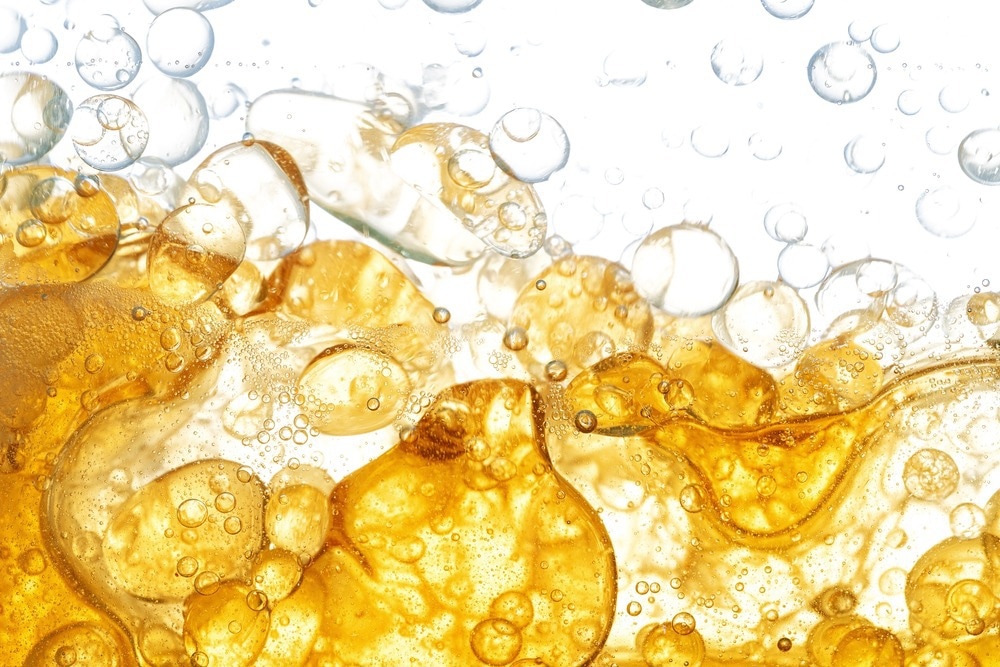The creation of palladium (Pd) and silver (Au) nanoplate-containing nanofluids for volumetric absorption of intense solar radiation in concentrating solar power (CSP) plants with parabolic-trough collectors (PTC) is the topic of a new study published in the journal Energy & Fuels.

Study: Are Nanofluids Suitable for Volumetric Absorption in PTC-CSP Plants? An Exemplified, Realistic Assessment with Characterized Metal–Oil Nanofluids. Image Credit: Sergio Sergo/Shutterstock.com
Concentrating solar power (CSP) can significantly reduce carbon dioxide emissions by minimizing the intermittent nature of photovoltaic and wind electricity, expanding their prominence in the current energy generation landscape.
The minimal energy conversion efficiencies of CSP plants establish a lower limit for their practical applications. An improvement in these efficiencies can considerably expedite the commercialization of CSP technology. The utilization of nanofluids as novel heat transfer fluids (HTFs) for this function has been suggested recently, provided that the physical parameters that govern convective heat flow are adequately increased.
Nanofluids: Why are they Important?
Solar-to-thermal power transformation is a highly prominent application area in which nanofluids, which are already known for their use in complex applications, may be employed for heat transmission, thermal energy retention, or volumetric absorbance.
Heat transfer fluids' (HTFs') physical qualities influence the performance, affordability, and dependability of solar-to-thermal power conversion systems. It is widely acknowledged and well documented in the literature that adopting innovative HTFs such as nanofluids can considerably benefit applications that depend on solar energy conversion.
This is also true for concentrated solar power (CSP) plants, a novel renewable energy generation technique for long-term and possibly dispatchable electricity production severely hampered by the poor efficiency of solar-to-thermal energy transfer.
Performance Enhancement of CSP Plants using Nanofluids
As heat transfer fluids or latent heat storage compounds, nanofluids can remarkably increase the effectiveness of CSP systems. Thermal lubricants and melted salts are critical components of CSP plant energy-producing processes. As such, they are appealing base fluids for developing nanofluids to increase the reliability and thermophysical features of CSP plants.
The receiver operating fluid in CSP facilities using parabolic-trough collectors (PTC), the most developed and frequently used collector shape, is usually a eutectic and azeotropic combination of biphenyl and diphenyl oxide.
The creation of nanofluids based on this natural thermal oil has lately received intense attention, with major work dedicated to their synthesis, stability study, and thermal and physicomechanical property evaluation.
Nanofluids as Novel Volumetric Absorbers in CSP Plants
Using nanofluids as volumetric absorbers for immediate solar-to-thermal energy transfer is optimal without convention from surface-treated materials. As local overheating does not arise with volumetric absorbers, pumping energy may be lowered while the temperature differential between the surface absorbers and the fluid remains minimal, resulting in lower emissive losses.
Nevertheless, for volumetric absorption to be effective, solar absorption with nanofluids must be continuous throughout the optical pathway of the parabolic-trough collector's radial orientation.
Several studies have been conducted to characterize the optical characteristics of nanofluids, some with an emphasis on their possible use in CSP-PTC plants. As a general rule, opaque, dark nanofluids are appropriate for this purpose.
This work thoroughly investigates the feasibility of using Au and Pd nanoplate-containing nanofluids as volumetric absorbers and HTFs in CSP-PTC systems. The researchers also compare the conventional A HTF and nanofluids based on critical characteristics such as projected PTC efficiency, heat exchange efficacy, and overall system performance.
Important Findings of the Study
The perfect distribution of mass fractions enhances spectral attenuation over the whole visible light spectrum, implying that the produced nanofluids, especially those containing Pd nanoplates, are highly suitable for volumetric absorption. Furthermore, with no rheological cost, the nanoparticles can significantly increase the thermal conductance and heating value of CSP-PTC plants, suggesting that nanofluids are potentially attractive possibilities for heat transfer applications.
The researchers successfully gave a realistic evaluation of the ramifications of employing these nanofluids in PTCs for CSP plants using a few mathematically basic but relevant expressions accessible in the literature.
It was shown that Pd nanoplate-containing nanofluids might improve plant efficiency by up to 31.6 percent while lowering pumping needs by 15%, maintaining structural alterations to a minimum, and preserving structural stability by preventing surface collector overheating.
Reference
Carrillo-Berdugo, I. et al. (2022). Are Nanofluids Suitable for Volumetric Absorption in PTC-CSP Plants? An Exemplified, Realistic Assessment with Characterized Metal–Oil Nanofluids. Energy & Fuels. Available at: https://pubs.acs.org/doi/10.1021/acs.energyfuels.2c01759
Disclaimer: The views expressed here are those of the author expressed in their private capacity and do not necessarily represent the views of AZoM.com Limited T/A AZoNetwork the owner and operator of this website. This disclaimer forms part of the Terms and conditions of use of this website.